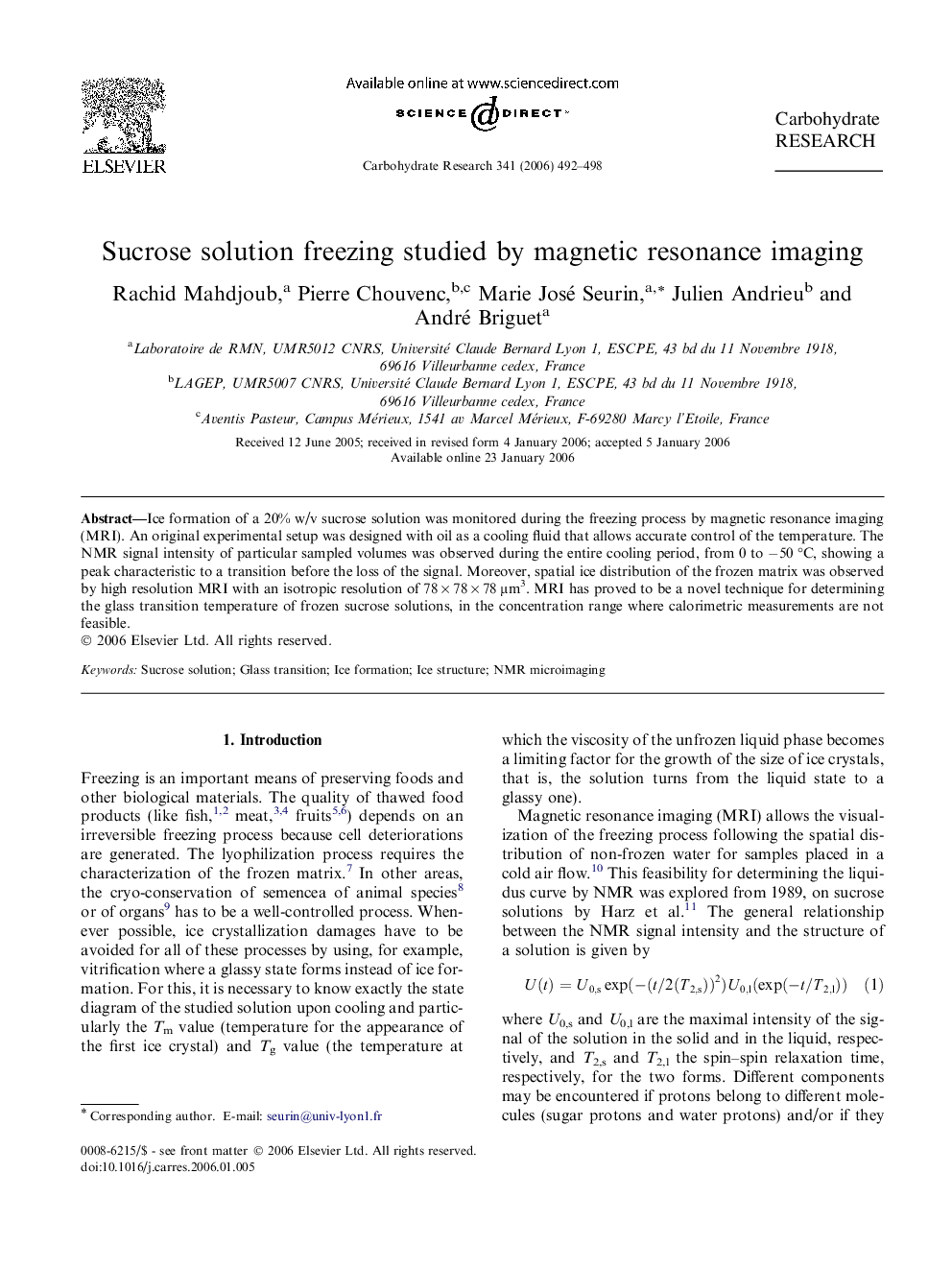| Article ID | Journal | Published Year | Pages | File Type |
|---|---|---|---|---|
| 1389534 | Carbohydrate Research | 2006 | 7 Pages |
Ice formation of a 20% w/v sucrose solution was monitored during the freezing process by magnetic resonance imaging (MRI). An original experimental setup was designed with oil as a cooling fluid that allows accurate control of the temperature. The NMR signal intensity of particular sampled volumes was observed during the entire cooling period, from 0 to −50 °C, showing a peak characteristic to a transition before the loss of the signal. Moreover, spatial ice distribution of the frozen matrix was observed by high resolution MRI with an isotropic resolution of 78 × 78 × 78 μm3. MRI has proved to be a novel technique for determining the glass transition temperature of frozen sucrose solutions, in the concentration range where calorimetric measurements are not feasible.
Graphical abstractMagnetic resonance imaging (MRI) is used to non-invasively image both the phase transition of an aqueous sucrose solution undergoing freezing and the structure of the frozen matrix.
